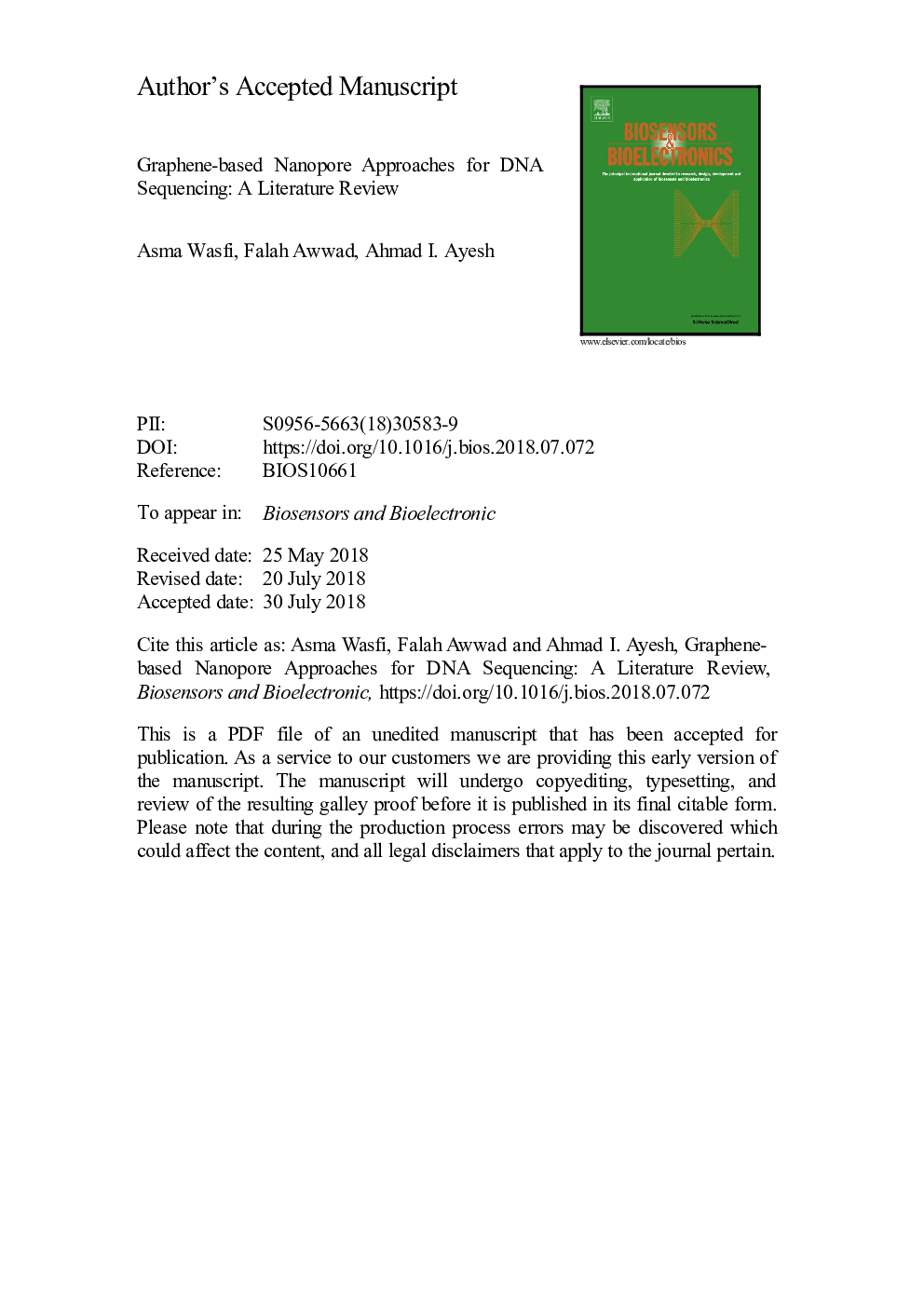| Article ID | Journal | Published Year | Pages | File Type |
|---|---|---|---|---|
| 7228862 | Biosensors and Bioelectronics | 2018 | 31 Pages |
Abstract
DNA (deoxyribonucleic acid) is the blueprint of life as it encodes all genetic information. In genetic disorder such as gene fusion, copy number variation (CNV) and single nucleotide polymorphism, DNA sequencing is used as the gold standard for successful diagnosis. Researchers have been conducting rigorous studies to achieve genome sequence at low cost while maintaining high accuracy and high throughput, as such sequencer devices have been developed which led to the evolvement of this technology. These devices are categorized into first, second, and third DNA sequencing generations. One successful endeavor for DNA sequencing is nanopore sequencing. This specific method is considered desirable due to its ability to achieve DNA sequencing while maintaining the required standards such as low cost, high accuracy, long read length, and high throughput. On the other hand, non-nanopore sequencing techniques require extensive preparation as well as complex algorithms, and are restricted by high cost, small throughput, and small read lengths. In this review, the concepts, history, advances, challenges, applications, and potentials of nanopore sequencing are discussed including techniques and materials used for nanopore production and DNA translocation speed control. Additionally, in light of the importance of the nanopore material configuration and fabrication, graphene which is a common and effective material will be discussed in the context of nanopore fabrication techniques. Finally, this review will shed light on some nanopore-related investigations in the area of molecular biology.
Keywords
Related Topics
Physical Sciences and Engineering
Chemistry
Analytical Chemistry
Authors
Asma Wasfi, Falah Awwad, Ahmad I. Ayesh,
